Abstract
The nitro-aromatic radiosensitizing drugs are selectively toxic to hypoxic mammalian cells, and this toxicity can be greatly increased by the addition of ascorbate. The ascorbate itself is not toxic to either hypoxic or aerobic cells (as long as catalase is present to prevent the formation of significant concentrations of hydrogen peroxide) and the mixture of ascorbate plus radiosensitizer is not more toxic to aerobic cells. Sulphydryl reducing agents and dithionite have an effect opposite to ascorbate and decrease the toxicity of nitro-aromatic drugs under hypoxic conditions. Sulphydryl reducing agents are also reported to nullify the radiosensitizing properties of nitro-aromatic drugs, in contrast to ascorbate which has no effect on the radiosensitizing properties. The toxicity of nitro-aromatic drugs decreases rapidly with increasing O2 concentration. This decrease is much less rapid when ascorbate is present. The role of ascorbate in this case may be primarily as an O2 scavenger, although it is also possible that the toxic species produced by radiosensitizer-ascorbate mixtures is less easily removed or detoxified by O2.
Full text
PDF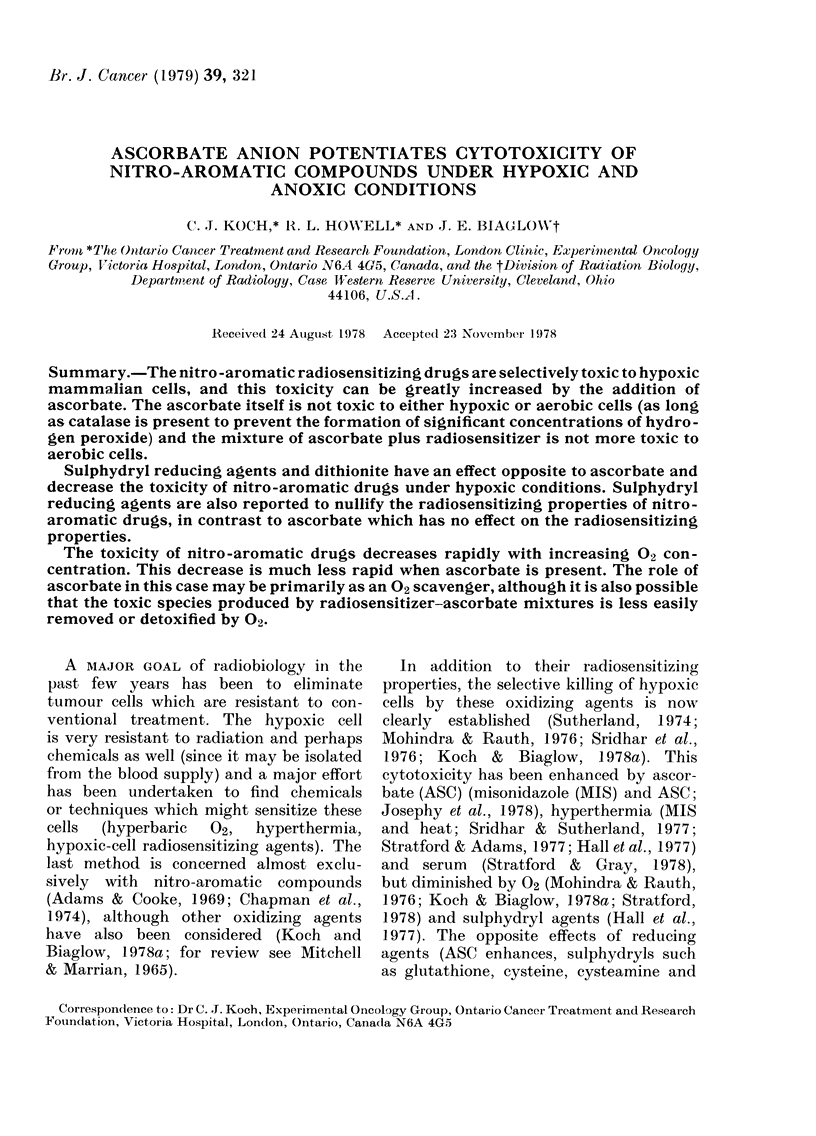
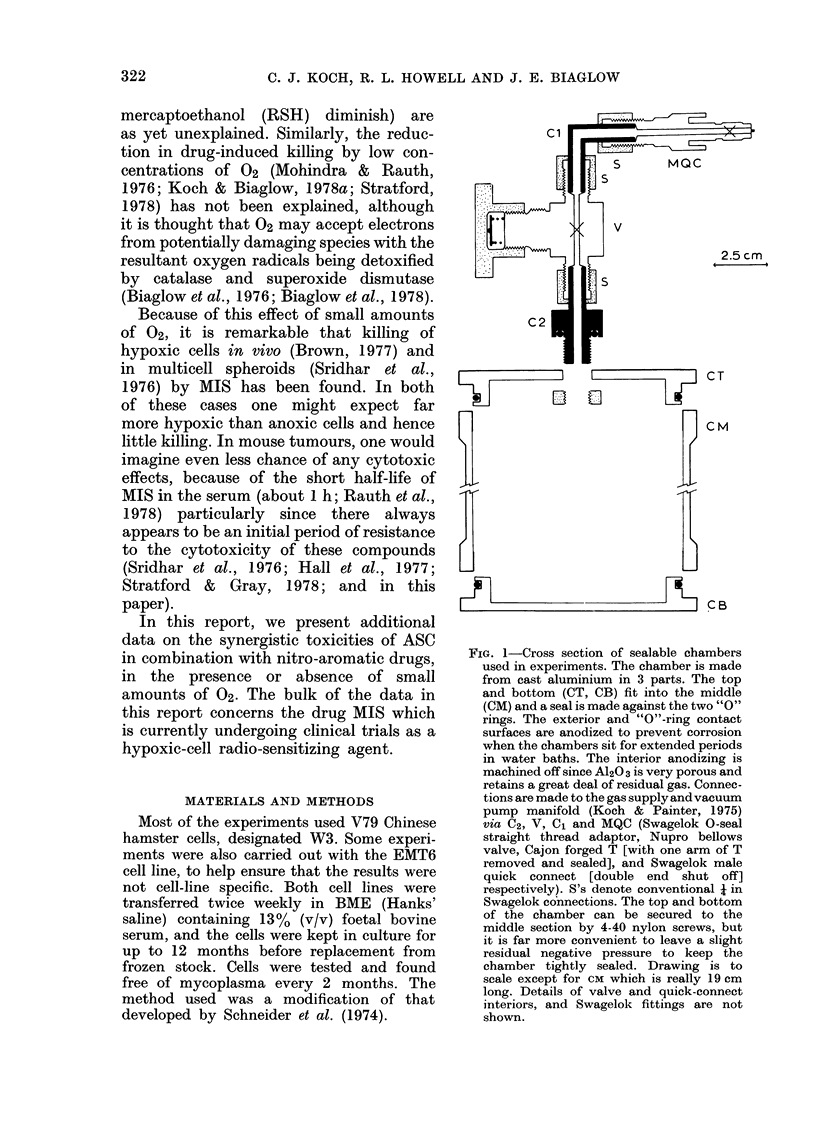
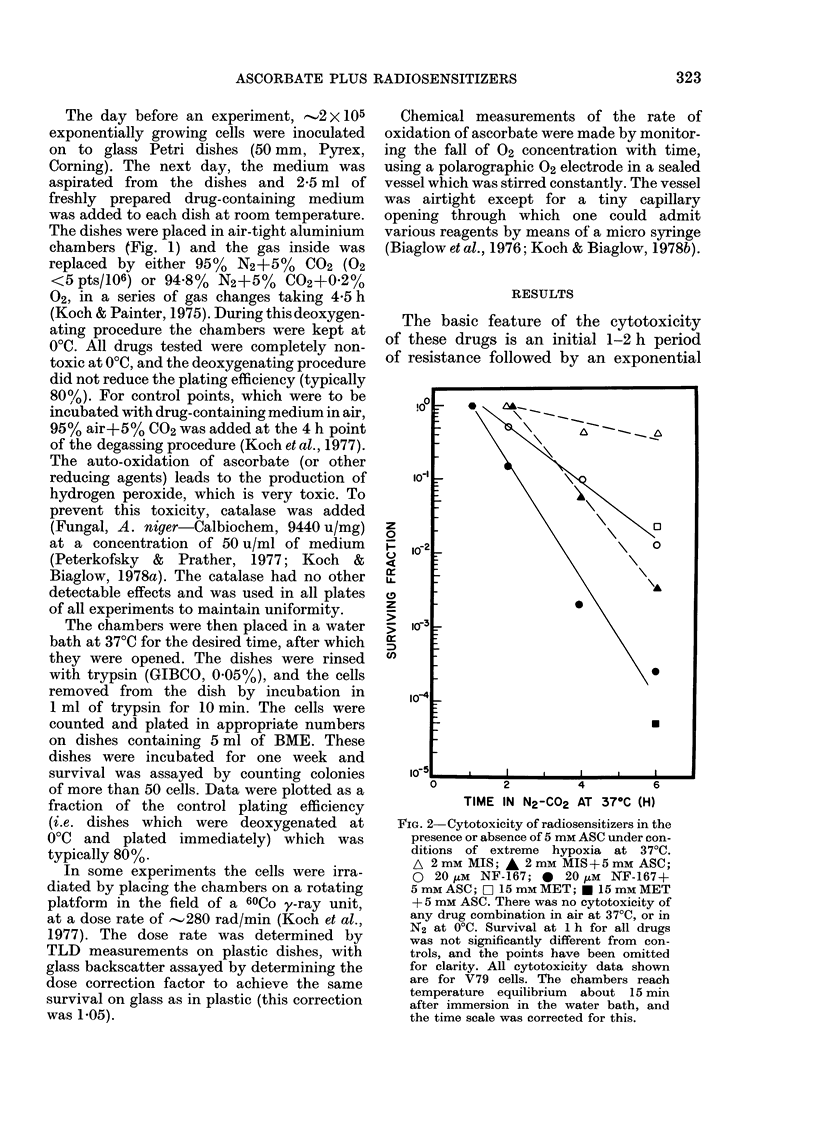
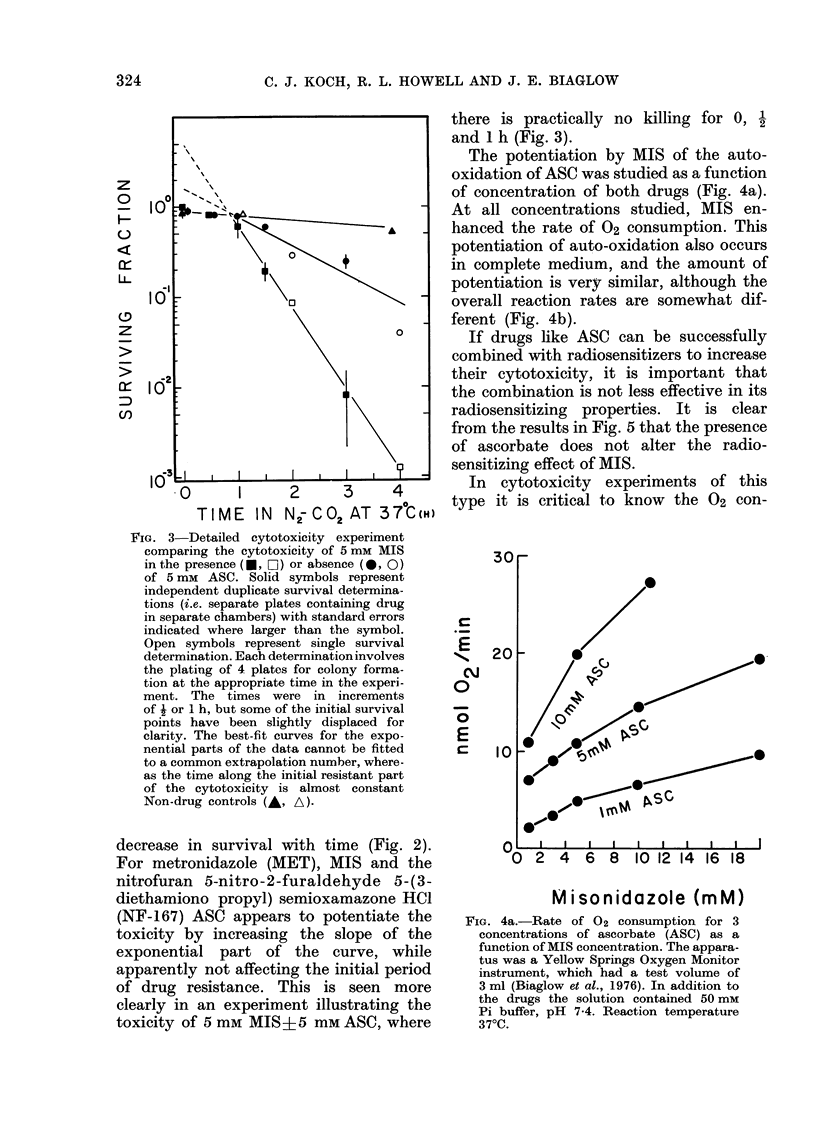
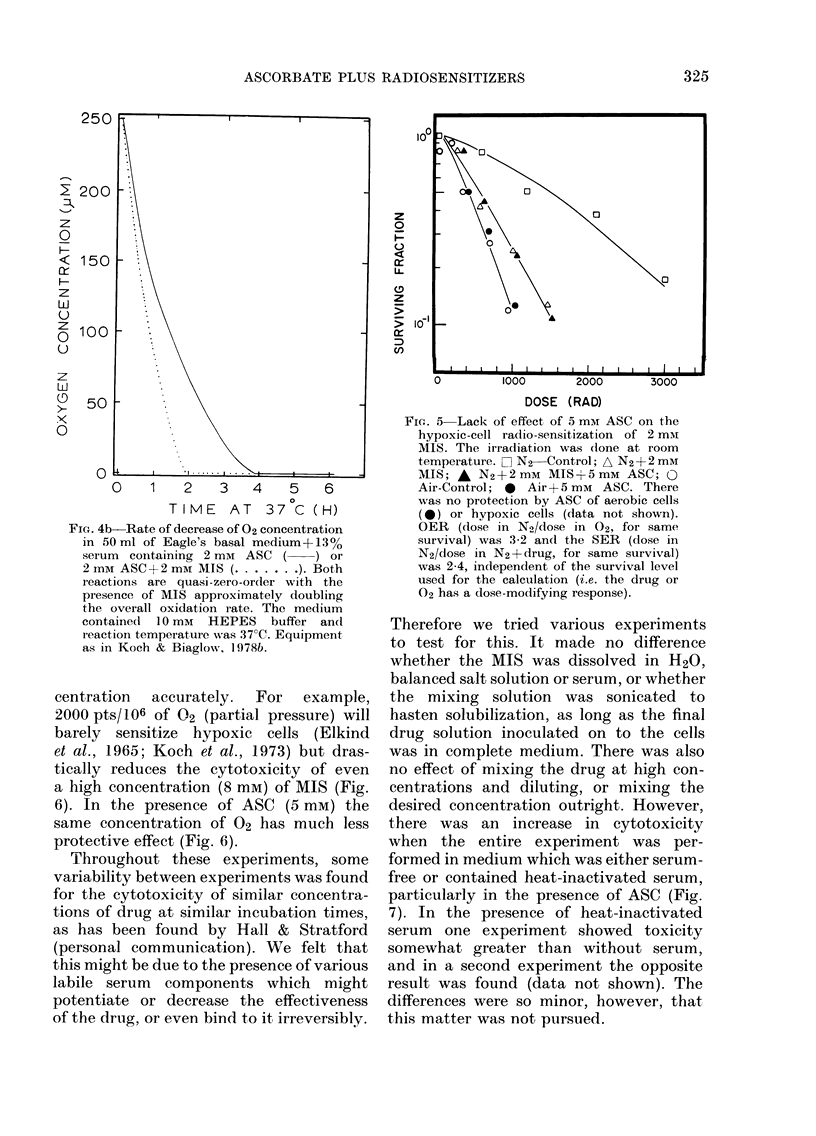
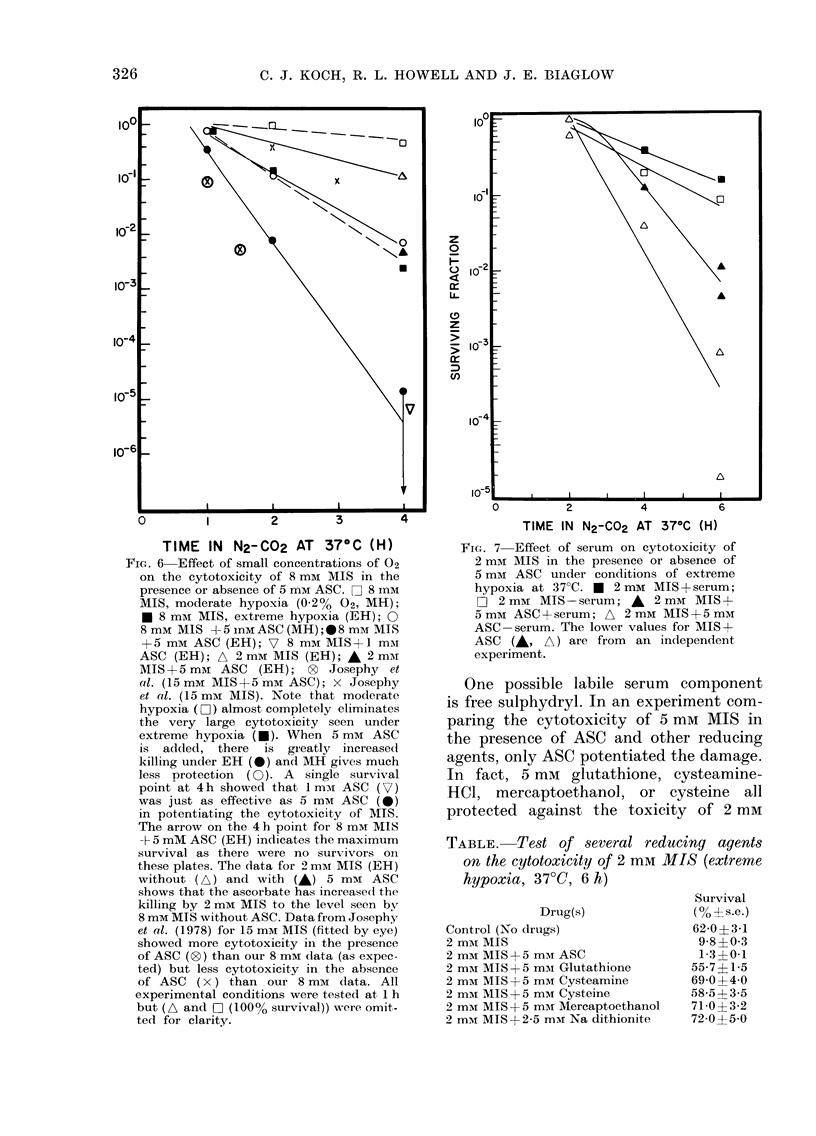
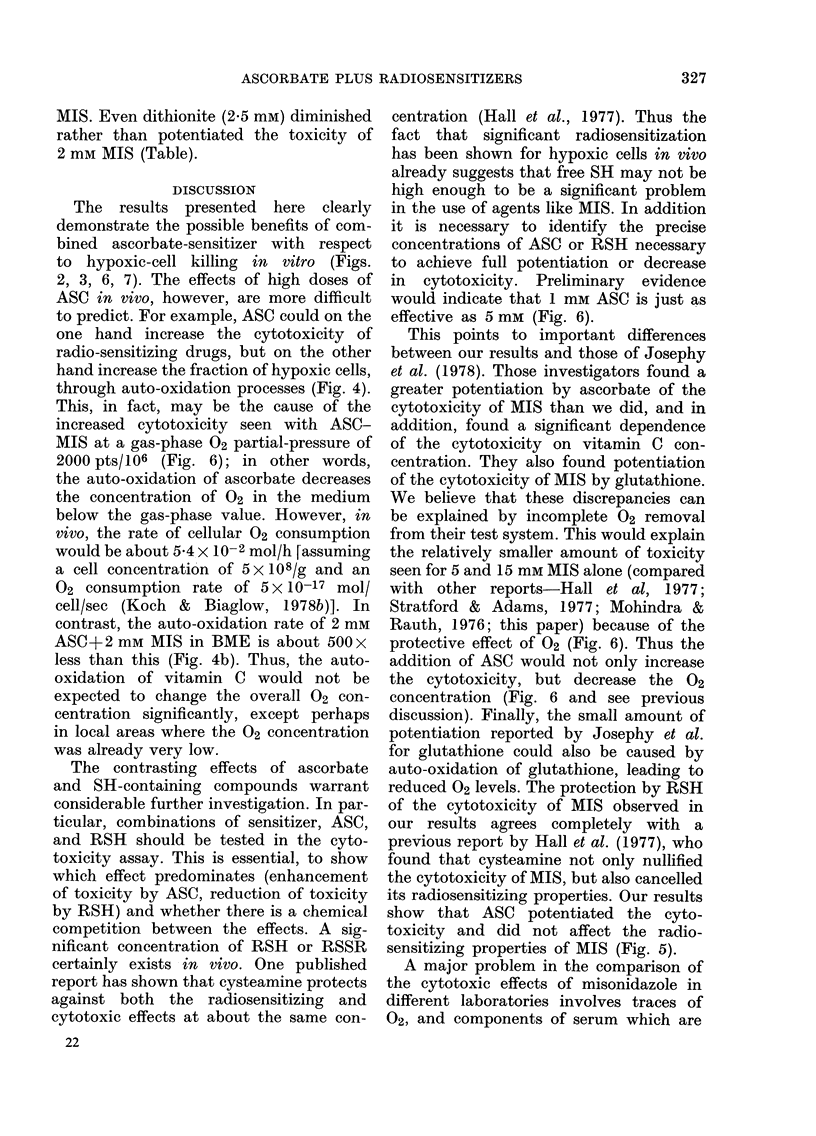
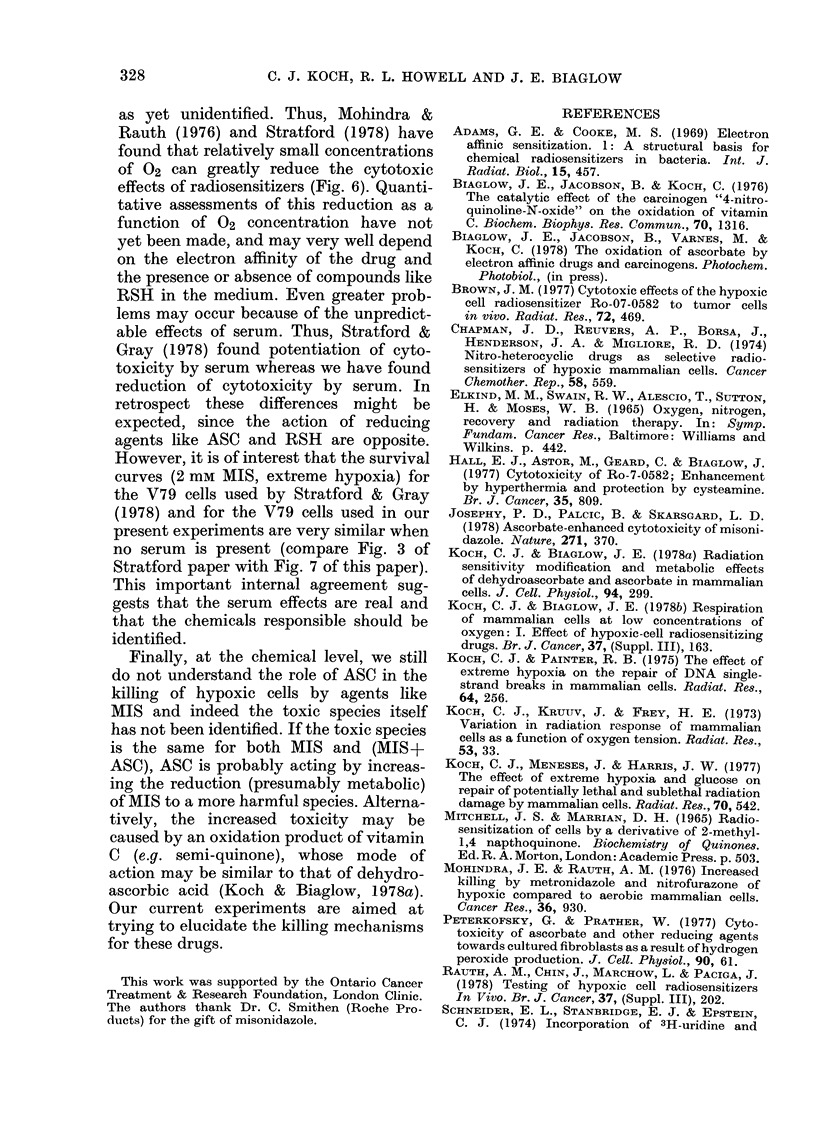
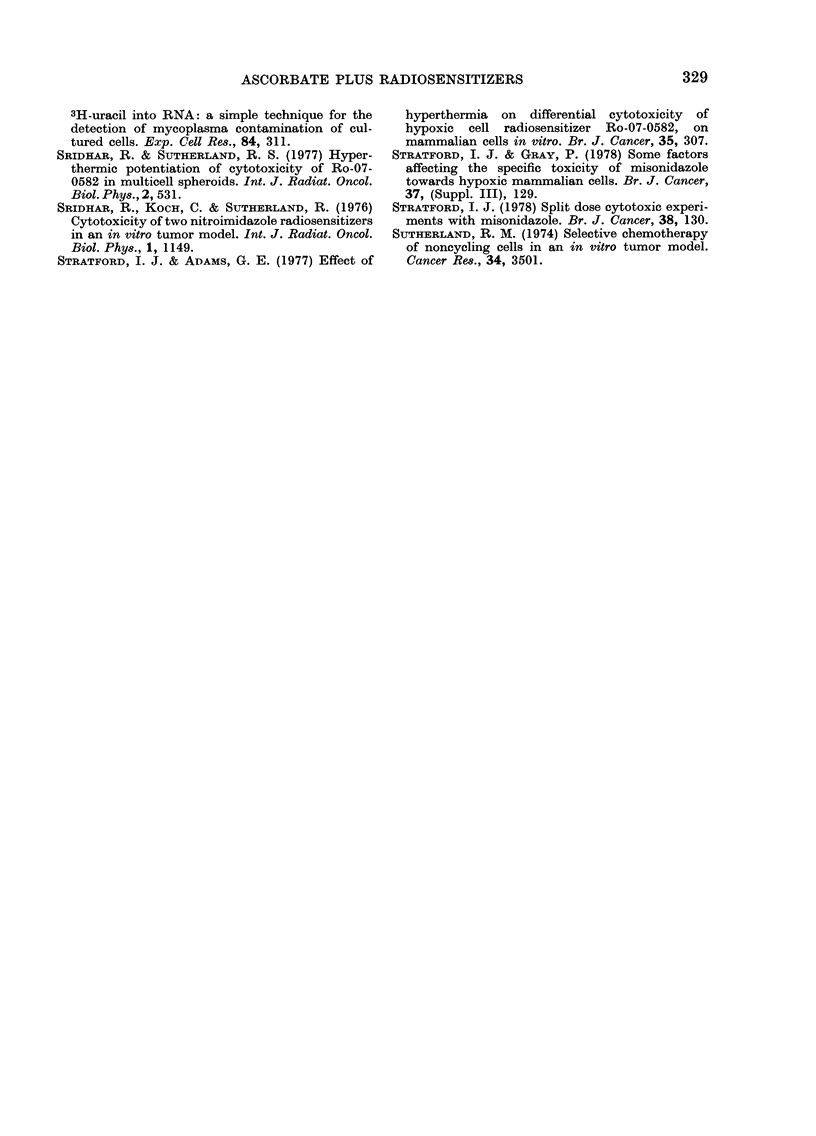
Selected References
These references are in PubMed. This may not be the complete list of references from this article.
- Adams G. E., Cooke M. S. Electron-affinic sensitization. I. A structural basis for chemical radiosensitizers in bacteria. Int J Radiat Biol Relat Stud Phys Chem Med. 1969 Jul;15(5):457–471. doi: 10.1080/09553006914550741. [DOI] [PubMed] [Google Scholar]
- Biaglow J. E., Jacobson B., Koch C. The catalytic effect of the carcinogen "4-nitroquinoline-N-oxide" on the oxidation of vitamin C. Biochem Biophys Res Commun. 1976 Jun 21;70(4):1316–1323. doi: 10.1016/0006-291x(76)91046-9. [DOI] [PubMed] [Google Scholar]
- Brown J. M. Cytotoxic effects of the hypoxic cell radiosensitizer Ro 7-0582 to tumor cells in vivo. Radiat Res. 1977 Dec;72(3):469–486. [PubMed] [Google Scholar]
- Chapman J. D., Reuvers A. P., Borsa J., Henderson J. S., Migliore R. D. Nitroheterocyclic drugs as selective radiosensitizers of hypoxic mammalian cells. Cancer Chemother Rep. 1974 Jul-Aug;58(4):559–570. [PubMed] [Google Scholar]
- Hall E. J., Astor M., Geard C., Biaglow J. Cytotoxicity of Ro-07-0582; enhancement by hyperthermia and protection by cysteamine. Br J Cancer. 1977 Jun;35(6):809–815. doi: 10.1038/bjc.1977.122. [DOI] [PMC free article] [PubMed] [Google Scholar]
- Josephy P. D., Palcic B., Skarsgard L. D. Ascorbate-enhanced cytotoxicity of misonidazole. Nature. 1978 Jan 26;271(5643):370–372. doi: 10.1038/271370a0. [DOI] [PubMed] [Google Scholar]
- Koch C. J., Biaglow J. E. Toxicity, radiation sensitivity modification, and metabolic effects of dehydroascorbate and ascorbate in mammalian cells. J Cell Physiol. 1978 Mar;94(3):299–306. doi: 10.1002/jcp.1040940307. [DOI] [PubMed] [Google Scholar]
- Koch C. J., Kruuv J., Frey H. E. Variation in radiation response of mammalian cells as a function of oxygen tension. Radiat Res. 1973 Jan;53(1):33–42. [PubMed] [Google Scholar]
- Koch C. J., Meneses J. J., Harris J. W. The effect of extreme hypoxia and glucose on the repair of potentially lethal and sublethal radiation damage by mammalian cells. Radiat Res. 1977 Jun;70(3):542–551. [PubMed] [Google Scholar]
- Koch C. J., Painter R. B. The effect of extreme hypoxia on the repair of DNA single-strand breaks in mammalian cells. Radiat Res. 1975 Nov;64(2):256–269. [PubMed] [Google Scholar]
- Mohindra J. K., Rauth A. M. Increased cell killing by metronidazole and nitrofurazone of hypoxic compared to aerobic mammalian cells. Cancer Res. 1976 Mar;36(3):930–936. [PubMed] [Google Scholar]
- Peterkofsky B., Prather W. Cytotoxicity of ascorbate and other reducing agents towards cultured fibroblasts as a result of hydrogen peroxide formation. J Cell Physiol. 1977 Jan;90(1):61–70. doi: 10.1002/jcp.1040900109. [DOI] [PubMed] [Google Scholar]
- Rauth A. M., Chin J., Marchow L., Paciga J. Testing of hypoxic cell radiosensitizers in vivo. Br J Cancer Suppl. 1978 Jun;3:202–205. [PMC free article] [PubMed] [Google Scholar]
- Schneider E. L., Stanbridge E. J., Epstein C. J. Incorporation of 3H-uridine and 3H-uracil into RNA: a simple technique for the detection of mycoplasma contamination of cultured cells. Exp Cell Res. 1974 Mar 15;84(1):311–318. doi: 10.1016/0014-4827(74)90411-x. [DOI] [PubMed] [Google Scholar]
- Sridhar R., Koch C., Suterland R. Cytotoxicity of two nitroimidazole radiosensitizers in an in vitro tumor model. Int J Radiat Oncol Biol Phys. 1976 Nov-Dec;1(11-12):1149–1157. doi: 10.1016/0360-3016(76)90088-2. [DOI] [PubMed] [Google Scholar]
- Sridhar R., Sutherland R. Hyperthermic potentiation of cytotoxicity of Ro-07-0582 in multicell spheroids. Int J Radiat Oncol Biol Phys. 1977 May-Jun;2(5-6):531–535. doi: 10.1016/0360-3016(77)90164-x. [DOI] [PubMed] [Google Scholar]
- Stratford I. J., Adams G. E. Effect of hyperthermia on differential cytotoxicity of a hypoxic cell radiosensitizer, Ro-07-0582, on mammalian cells in vitro. Br J Cancer. 1977 Mar;35(3):307–313. doi: 10.1038/bjc.1977.44. [DOI] [PMC free article] [PubMed] [Google Scholar]
- Stratford I. J., Gray P. Some factors affecting the specific toxicity of misonidazole towards hypoxic mammalian cells. Br J Cancer Suppl. 1978 Jun;3:129–131. [PMC free article] [PubMed] [Google Scholar]
- Stratford I. J. Split dose cytotoxic experiments with misonidazole. Br J Cancer. 1978 Jul;38(1):130–136. doi: 10.1038/bjc.1978.172. [DOI] [PMC free article] [PubMed] [Google Scholar]
- Sutherland R. M. Selective chemotherapy of noncycling cells in an in vitro tumor model. Cancer Res. 1974 Dec;34(12):3501–3503. [PubMed] [Google Scholar]


